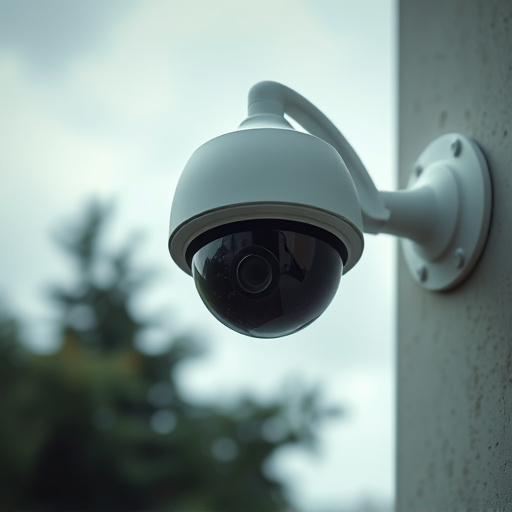Dummy security cameras with infrared (IR) sensors, placed 2-3 meters above ground as per Dummy Security Camera Height Guidelines, act as effective deterrents against intruders. While they mimic real surveillance, fake IR sensors may have limited accuracy in various lighting conditions. Following the guidelines ensures optimal coverage and footage quality, enhancing security without unnecessary costs.
“Uncover the power of deception with our guide on fake camera infrared sensor LEDs. In an era where security is paramount, understanding the nuances of dummy security cameras is essential. This comprehensive article delves into the art of simulating real surveillance with artificial infrared sensors. We explore critical aspects like choosing the right LED color and intensity, optimal height guidelines for maximum effectiveness, and expert installation tips. Discover why these dummy cameras are not just fake, but strategic game-changers in enhancing security.”
- Understanding Fake Camera Infrared Sensors
- Why Height Matters in Security Cameras
- Benefits of Using Dummy Security Cameras
- Choosing the Right LED Color and Intensity
- Installation and Placement Guidelines
Understanding Fake Camera Infrared Sensors
Understanding Fake Camera Infrared Sensors
In recent years, dummy security cameras equipped with infrared (IR) sensors have gained popularity as an affordable and effective deterrent for potential intruders. These fake camera systems mimic the appearance of real surveillance equipment, often adhering to industry standards like Dummy Security Camera Height Guidelines, ensuring they blend seamlessly into various environments. However, it’s crucial to distinguish these from genuine IR sensors, which are designed with precision and specific technical requirements in mind.
Fake IR sensors typically use LED lights that emit infrared radiation, giving the illusion of active surveillance. While this can deter criminals, it’s essential for property owners to recognize the limitations. Unlike real sensors, dummy IR cameras may not always detect heat signatures accurately, leading to false alarms or missed alerts. Moreover, their sensitivity and range are generally lower, making them less effective in low-light conditions or large areas. Understanding these differences is vital to ensuring adequate security measures.
Why Height Matters in Security Cameras
In security camera systems, height plays a significant role in ensuring optimal visibility and effective surveillance. When selecting or designing dummy security cameras, understanding the ideal placement height is crucial. The Dummy Security Camera Height Guidelines recommend positioning cameras at strategic locations to maximize field of view and capture clear images. Generally, placing cameras at a height of 2-3 meters (6.5-10 feet) above ground level offers a balanced perspective, covering a wide area without capturing unwanted details like people’s faces or license plates from the ground.
This elevation allows for a comprehensive view of entry points, corridors, and common areas while maintaining privacy. By adhering to these guidelines, security systems can effectively deter potential intruders and gather invaluable footage. Moreover, the right camera height ensures that captured images are of sufficient quality, reducing the need for excessive zooming or image enhancement, which could introduce artifacts or compromise privacy further.
Benefits of Using Dummy Security Cameras
Dummy security cameras, also known as fake or decoy cameras, offer a range of benefits for enhancing home and business security. One of their key advantages is the deterrent effect they have on potential intruders. By strategically placing these cameras at various heights—the Dummy Security Camera Height Guidelines generally recommend around 5-8 feet (1.5-2.4 meters) above ground level—it creates an illusion of a fully functional surveillance system, discouraging unauthorized entry.
These cameras are especially useful for deterring crime in areas with high incidents of theft or vandalism. Their realistic appearance and consistent placement can trick intruders into believing they are under constant watch, significantly reducing the risk of illegal activities. Additionally, dummy cameras provide peace of mind to homeowners and business owners by providing a cost-effective alternative to installing multiple real security cameras while still maintaining a robust security presence.
Choosing the Right LED Color and Intensity
When selecting an LED for your dummy security camera, color and intensity play a crucial role in its effectiveness. Opt for LEDs that mimic the warm glow of traditional incandescent bulbs, as this is less likely to attract attention compared to bright, cold blue or white lights. This is particularly important if you’re aiming to blend the camera into its environment without drawing unnecessary attention.
According to Dummy Security Camera Height Guidelines, intensity should be carefully considered too. A bright LED can serve as a deterrent for potential intruders, but an overly powerful light may create harsh shadows, revealing more than desired. Aim for a balanced setting that provides adequate illumination while remaining subtle enough to avoid raising suspicion.
Installation and Placement Guidelines
In conclusion, dummy security cameras equipped with fake infrared sensors offer a cost-effective and versatile solution for enhancing home or business security. By understanding the unique features of these devices, such as LED color and intensity, and following proper installation guidelines like optimal height placement, you can create an effective security system that deters crime without breaking the bank. Remember, the right dummy camera at the right place can make all the difference in maintaining a safe environment.
